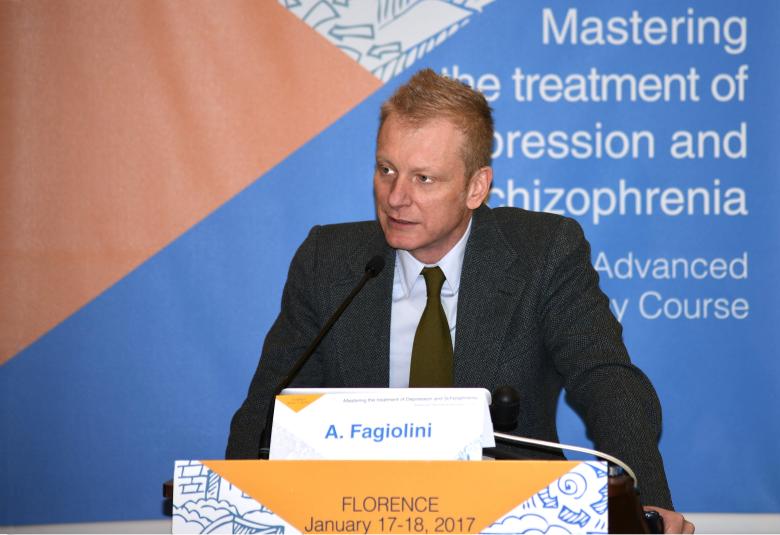Epigenetic modulation of transmitters, receptors and pathways are novel pathophysiological mechanisms contributing to the development of major depressive disorder (MDD), explained a speaker at a fascinating symposium at WCP 2019. The identification and study of molecules within these pathways — such as acetyl-L-carnitine (LAC), lactate and neuropeptide Y (NPY) — are steps towards personalizing therapy for MDD
Brain plasticity and responses to stress depend on1:
- interactions between a variety of mediators
- a continually changing pattern of epigenetically controlled gene expression
Furthermore, epigenetic modulation appears to promote rapid antidepressant responses.1
LAC is a potential biomarker and therapeutic target
LAC is a rapid-acting modulator of glutamatergic function and structural plasticity of the ventral hippocampal circuit in rodent models of chronic stress. It regulates physiological functions, including the acetylation of histones responsible for gene expression,2 said the first speaker.
LAC levels are decreased in patients with MDD, with the severity and age of onset of MDD
LAC levels are decreased in rodent models with depressive traits;2 and are also decreased in patients with MDD, with the severity and age of onset of MDD reflecting the degree of LAC deficiency.3
These early findings suggest that LAC is a potential biomarker to aid the diagnosis of MDD and might be a therapeutic target.
Lactate has antidepressant effects
Hippocampal neurogenesis plays a role in the antidepressant effects of lactate
Astrocytes are key players in energy metabolism and glutamate transport; and respond to glutamate by increasing glucose utilization and lactate release, explained the second speaker.4
He described his research demonstrating that5:
- acute lactate administration increases lactate concentration in the hippocampus
- chronic lactate administration improves depressive-like behavior in rodents
He explained that the antidepressant effects of lactate are associated with changes in the expression of specific target genes impacting adult hippocampal neurogenesis. Chronic peripheral injections of lactate counteract decreased neural progenitor proliferation and survival induced by chronic corticosterone treatment.
NPY has antidepressant effects
The third speaker described new knowledge about the role of neuropeptide Y (NPY) in MDD.
Decreased brain NPY expression has been found in genetic and environmental rodent models of depression and can be reversed by antidepressant treatments. These findings parallel the decreased NPY expression in humans diagnosed with MDD.
In view of the decreased NPYergic system in MDD, it was hypothesized that NPY could be developed as target for these disorders.
Cerebrospinal fluid (CSF) NPY is decreased in bipolar patients, who have a history of suicide attempt. Decreased CSF NPY in remitted bipolar patients can predict future suicide attempts.6
Potential mechanisms for the antidepressant effect of NPY include inhibition of glutamate release.
An opportunity to rethink translational paradigms
Excitatory amino acids and glucocorticoids have key roles in neural remodeling, and epigenetic mechanisms mediate continually changing gene expression.1
Metabolic communications between the brain and the body will increase understanding of the neurobiology and treatment of psychiatric disorders
New knowledge about the metabolic communications between the brain and the body will increase understanding of the neurobiology and treatment of psychiatric disorders. Emerging knowledge from cross-species models is highlighting the role of both genetic and epigenetic influences.
The chair of the session commented that it was fascinating to hear that all types of MDD are metabolic to a certain extent, indicating novel mechanisms for pathogenesis; and that hippocampal production and activation of metabolic substances, one of which is glutamate, needs further investigation.
She highlighted how:
- NPY, previously conceptualized as a gastrointestinal peptide, is now known to affect glutaminergic signaling and could become another potential drug or drug target
- lactate, previously conceptualized as an end product, is now recognized as a signaling molecule
She concluded that understanding the multifaceted nature of glutaminergic transmission as the brain shuttles energy and associated with neuroplasticity and neurodegenerative diseases promises to result in new drugs and targets and more personalized treatment.
Our correspondent’s highlights from the symposium are meant as a fair representation of the scientific content presented. The views and opinions expressed on this page do not necessarily reflect those of Lundbeck.




